Dominika |
|
|
|
| Übersicht – Contents: | |
Dominika |
|
|
|
| Übersicht – Contents: | |
Flaggen – Flags: |
|
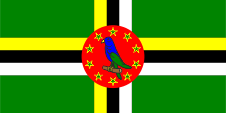 |
Nationalflagge – national flag, Seitenverhältnis – ratio = 1:2, Quelle/Source nach/by: Corel Draw 4 |
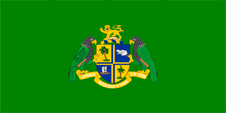 |
Präsidentenflagge – flag of the President, Seitenverhältnis – ratio = 1:2, Quelle/Source nach/by: Flags of the World |
historische Flaggen – historical Flags: |
|
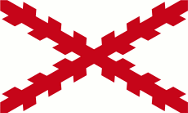 |
16. Jhd., Die Insel gehört zum spanischen Machtbereich – The island belongs to the Spanish sphere of influence, Quelle/Source nach/by: Wikipedia (EN) |
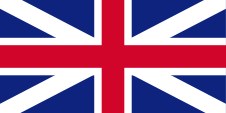 |
1761–1778, Flagge Großbritanniens – flag of United Kingdom, Seitenverhältnis – ratio = 1:2, Quelle/Source nach/by: Die Welt der Flaggen |
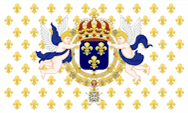 |
1778–1784, Flagge Frankreichs – flag of France, Quelle/Source nach/by: Sodacan [CC BY-SA 3.0], via Wikimedia Commons |
 |
1784–1801, Flagge Großbritanniens – flag of United Kingdom, Seitenverhältnis – ratio = 1:2, Quelle/Source nach/by: Die Welt der Flaggen |
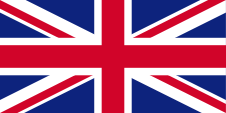 |
1801–1871, Flagge Großbritanniens – flag of United Kingdom, Seitenverhältnis – ratio = 1:2, Quelle/Source: World Statesmen |
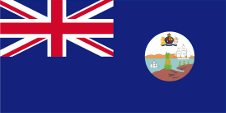 |
1871–1939, Leeward-Inseln – Leeward Islands, Flagge der Regierung (Staatsflagge) – flag of the government (state flag), Seitenverhältnis – ratio = 1:2, Quelle/Source: World Statesmen |
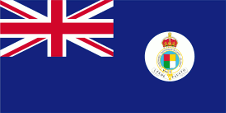 |
1939–1955, Windward-Inseln – Windward Islands, Flagge der Regierung (Staatsflagge) – flag of the government (state flag), Seitenverhältnis – ratio = 1:2, Quelle/Source: World Statesmen |
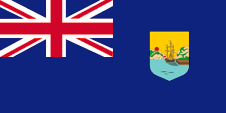 |
1955–1965, Flagge der Regierung (Staatsflagge) – flag of the government (state flag), Seitenverhältnis – ratio = 1:2, Quelle/Source: Flags of the World |
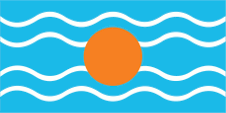 |
1958–1962, Flagge der Westindischen Föderation – flag of the Federation of the West Indies, Seitenverhältnis – ratio = 1:2, Quelle/Source, nach/by: Flags of the World |
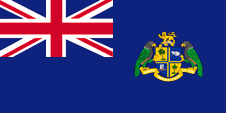 |
1965–1978, Flagge der Regierung (Staatsflagge) – flag of the government (state flag), Seitenverhältnis – ratio = 1:2, Quelle/Source: Flags of the World |
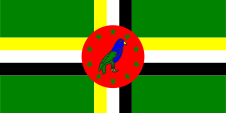 |
1978–1981, Nationalflagge – national flag, Seitenverhältnis – ratio = 1:2, Quelle/Source: Flags of the World |
 |
1981–1988, Nationalflagge – national flag, Seitenverhältnis – ratio = 1:2, Quelle/Source: Flags of the World |
Bedeutung/Ursprung der Flagge – Meaning/Origin of the Flag: |
|
| Als Dominika am 03.11.1978 unabhängig wurde, wurde eine grüne Flagge mit einem dreifarbigen Kreuz (Gelb, Weiß und Schwarz) eingeführt, welche in der Mitte eine rote Scheibe mit zehn grünen Sternen und einem Papagei trug. Die Flagge war von Alwin Bully gestaltet worden. Im den Jahren bis 1990 kam es zu einigen Änderungen: 1981; Reihenfolge der Farben im Kreuz, die Sterne erhalten gelbe Umrandungen, 1988; Spiegelung des Papageis um eine vertikale Achse und er sitz ab jetzt auf einem kleinen Ast. Die Farbe Grün steht für die Natur der Insel, und das dreifarbige Kreuz steht für das Christentum und die christliche Dreifaltigkeit. Gelb symbolisiert die Sonne und Fruchtbarkeit, sowie die Mulatten. Weiß verkörpert das Wasser und die Reinheit, sowie die weißen Inselbewohner. Schwarz versinnbildlicht die Erde, sowie die Inselbewohner afrikanischer Abstammung. Die rote Scheibe stand ursprünglich für das sozialistische Entwicklungsprogramm der Insel. Die zehn Sterne in der Scheibe verkörpern die geistlichen Verwaltungsbezirke der Insel. Der Papagei in der Mitte der Scheibe ist ein Sisserou (Amazon Imperialis), das Nationalsymbol von Dominika. Er wurde aus dem Staatswappen entnommen. | When
Dominika became independent on 3rd of November in 1978, a green flag with a
three-colored cross (yellow, white and black) was introduced, which had a
red disc with ten green stars and a parrot in the middle. The flag was
designed by Alwin Bully. In the years up to 1990 there were some changes:
1981; Order of the colors in the cross, the stars have a yellow border,
1988; The parrot is mirrored around a vertical axis and from now on it sits
on a small branch. The color green stands for the nature of the island, and the threecolored cross stands for the Christianity and the christian Trinity. Yellow symbolizes the sun and fruitfulness, as well as the Mulattos. White embodys the water and the purity, as well as the white residents of the island. Black allegorys the soil, as well as the residents of African descent. The red disk stood initialy for the socialistic development program of the island. The ten stars in the disk represent the clerical administrative districts of the island. The parrot in the middle of the disk is a Sisserou (Amazon Imperialis), the national symbol of Dominica. He is borrowed from the coat of arms of the state. |
| Ursprünglich gehörte Dominika zur britischen Kolonie der Leeward-Inseln, später zur britischen Kolonie der Windward-Inseln, und wurde im Jahre 1960 eine eigenständige Kolonie. Die Nationalflagge war in dieser Zeit ein sogenannter "Blue Ensign", ein dunkelblaues Flaggentuch mit einer Flaggendarstellung – dem britischen Union Jack – in der Oberecke. Der Union Jack wies auf die Verbindungen zu Großbritannien hin. | Initially Dominica
belonged to the British Leeward Islands Colony – later to the British Windward
Islands Colony – and became in 1960 a self-contained colony. The national flag was in
that times a so called "Blue Ensign", a dark blue flag with a flag depiction
– the British Union Jack – in the upper left staff quadrant. The Union Jack
pointed out to the connections to United Kingdom. |
Großbritannien hatte
in Jahr 1864 ein Flaggensystem eingeführt, in dem:
Seit 1865 durften Schiffe von Kolonialregierungen einen Blue Ensign mit einem Badge (Abzeichen) im fliegenden Ende führen. Die jeweiligen Regierungen sollten entsprechene Bagdes zur Verfügung stellen. Handelsschiffe und seefahrende Privatpersonen aus Kolonien dürfen nur dann einen Red Ensign mit Badge führen, wenn von der britischen Admiralität eine entsprechende Erlaubnis für die Kolonie erteilt wurde. |
United Kingdom
introduced a flag system in 1864 in which:
Since 1865 ships of colonial governments were permitted to fly the Blue Ensign with a badge in the flying end of the flag. The respective governments were asked to design appropriate badges. Merchant ships and seafaring persons from colonies were only permitted to use the Red Ensign with a badge, then also named Civil Ensign, if permission has been given to the respective colony by the British admiralty. |
| Ein solches Badge war oft eine auf einer Scheibe platzierte regionale landschaftliche Darstellung, zeigte oft Schiffe, historische Begebenheiten oder konnte auch nur eine Art Logo sein. Sehr oft zeigte ein Badge zusätzlich den Namen des Landes oder auch einen Wahlspruch. Einige Besitzungen hatten aber auch schon von Anfang an ein Wappen, bzw. erhielten über die Jahre eine eigenes Wappen und das Badge wurde abgeschafft. Um ein weitgehend einheitliches Erscheinungsbild im fliegenden Ende der Flaggen zu gewährleisten, wurden Wappen und auch andere Symbole auf einer weißen Scheibe in der Größe der früheren Badges dargestellt. Es gab hier aber auch Ausnahmen, denn einige Kolonien verwendeten diese weiße Scheibe nicht, und platzierten ihr Wappen oder auch nur das Wappenschild - manchmal auch vergrößert - direkt auf das Flaggentuch. Schon in den 40-er Jahre wurde dazu übergegangen die weiße Scheibe zu entfernen und das Wappen direkt zu platzieren oder vergrößert dazustellen. Dieser Umstellungsprozess erfolgte allmählich, nirgendwo gleichzeitig und vollständig. In einigen britischen Besitzungen sind bis heute Flaggen mit der weißen Scheibe in Gebrauch, in anderen nicht mehr und in einigen Gebieten gibt es beide Varianten nebeneinander. | Such a badge was often a regional landscape representation placed on a disk, often showing ships, historical events or even a kind of a logo. Very often, a badge also showed the name of the country or a motto.
Some British possessions, however, already had a coat of arms from the beginning, or their badge was replaced by a coat of arms over the years. To ensure a uniform appearance in the flying end of the flags, coats of arms and other symbols were displayed on a white disk in the size of the earlier badges. There were also exceptions, because some colonies did not use the white disk and placed their escutcheon or even coat of arms directly on the bunting, sometimes enlarged. Already in the '40s they started to remove the white disk and placed the coat of arms directly or enlarged. This conversion process was done gradually, nowhere at the same time and completely. In some British possessions, flags with the white disc are still in use, in others no more and in some areas are both variants in use, next to each other. |
| Die Leeward-Inseln erhielten im Jahre 1871 ein eigenes Badge. Es zeigte eine Ananas an einer Küste mit zwei Schiffen. | The Leeward Islands became awarded an own badge in the year 1871. It showed a pineapple at a coast with two ships. |
| Die Flagge der Windward-Inseln trug ein anderes Badge. Es zeigte einen vierfach geteilten Schild mit den Farben Rot, Gelb, Grün und Weiß, umgeben von einem weißen Gurt mit der Inschrift "Governor in Chief, Windward Islands", oberhalb die britische Krone. Unterhalb ein weißes Spruchband mit dem Motto der Inseln: "i pede fausto" => "Gehe mit gesegnetem Fuß". | The flag of the Windward Islands carryed an other badge. It showed a fourfold divided shield with the colours red, yellow, green and white, surrounded by a white belt with the inscription "Governor in Chief, Windward Islands", above the British crown. Below a white banner with the motto of the islands: "i pede fausto" => "go with blessed foot". |
| Die einzelnen Kolonien der Windward-Inseln führten jedoch meist ihre eigenen "Blue Ensigns" mit einem eigenen Badge. Die Flagge der Windward-Inseln wurde eigentlich nur von der Regierung der Kolonie verwendet. | The separate colonies of the Windward Islands had however mostly used their own "Blue Ensigns" with an own badge. The flag of the Windward Islands was almoust used by the government of the colony. |
| Dominika erhielt 1955 ein eigenes Badge, das auf einem "Blue Ensign" verwendet wurde. Es zeigte eine Küstenlandschaft mit einem britschen Handelsschiff mit gerefften Segeln im Vordergrund und im Hintergrund die Silhouette einer Stadt an einem Berg. | Dominica became awarded an own badge in the year 1955, which was in use on an "Blue Ensign". It showed coastal scenery with a British merchant ship with reefed sails in the foreground and in the background the silhouette of a town at a mountain. |
| Dominika, seit 1967 mit eigener Verwaltung, zeigte auf der Flagge ab 1965 kein Badge mehr auf der Flagge, sondern das 1961 verliehene Wappen. | Dominica, since 1967
with his own government, used no badge anymore since 1965, but the in 1961 awarded coat of
arms of the state. |
| Quelle/Source: Die Welt der Flaggen, Flaggen Wappen Hymnen, Flaggen und Wappen der Welt | |
Wappen – Coat of Arms: |
|
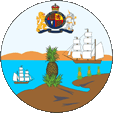 |
1871–1939, Badge der Leeward-Inseln – badge of the Leeward Islands Quelle/Source: Das Flaggenbuch |
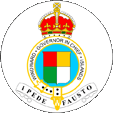 |
1939–1955, Badge der Windward-Inseln – badge of the Windward Islands Quelle/Source: Das Flaggenbuch |
 |
1955–1965, Wappen von Dominika – coat of arms of Dominica Quelle/Source: Flags of the World |
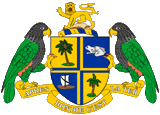 |
Wappen von Dominika – coat of arms of Dominica Quelle/Source: Corel Draw 4 |
Bedeutung/Ursprung des Wappens – Meaning/Origin of the Coat of Arms: |
|
| Das heutige Wappen von Dominika zeigt zwei Sisserou-Vögel (Amazon Imperialis) als Schildhalter, und ein viergeteiltes Wappenschild. Die einzelen Felder zeigen regionale Motive: Palme, Frosch, Segelboot und Bananenbaum. Oberhalb des Schildes auf einem golden-blauen Wulst ein goldener britischer Löwe. Unterhalb des Schildes ein Spruchband mit dem Staatsmotto in Französisch: "Aprés Bondies c'est la Ter" => "Nach Gott kommt das Land". | The
today's coat of arms of
Dominica shows two Sisserou Birds (Amazon Imperialis) as shield holders, und a quartered
blazon. The single fields show regional motives: palm tree, frog, sailing boat and banana
tree. Above the shield on a golden-blue torus a golden British lion. Below the shield a
maxim-ribbon with the motto of the state in French: "Aprés Bondies c'est la
Ter" => "Behind God comes the country". |
| Quelle/Source: Die Welt der Flaggen, Flaggen Wappen Hymnen, Flaggen und Wappen der Welt | |
| Landkarten – Maps: |
Lage
– Position: |
Landkarte
des Landes – Map of the Country: |
Zahlen und Fakten – Numbers and Facts: |
|
|
|
|
|
|
|
|
|
|
|
|
|
|
|
|
|
|
|
Geschichte: |
| 5.–4.
Jahrtausend v. Chr. · erste menschliche Besiedlung der Insel 03.11.1493 · Entdeckung durch Kolumbus 1627 · der Earl of Carlisle beansprucht die Insel für England, jedoch erfolgt keine Kolonisierung 1635 · Frankreich erhebt Ansprüche auf die Insel, jedoch erfolgt keine Kolonisierung 31.03.1660 · Abkommen zwischen den Karibischen Ureinwohnern, Engländern und Franzosen, dass die Insel den Kariben überlassen wird, dennoch kommen in den Folgejahren einige französische Siedler auf die Insel 1686 · England und Frankreich bestätigen des Status der Insel als Kariben-Territorium, dennoch kommen in den Folgejahren weiterhin französische Siedler und Missionare auf die Insel 1700 · die Briten versuchen eine Kolonie auf der Insel zu gründen 1748–1761 · die Insel ist offiziel neutrales Gebiet zwischen Großbritannien und Frankreich 06.06.1761 · Großbritannien besetzt die Insel 1778 · Frankreich besetzt die Insel 1784 · Dominica wird wieder britische Kolonie 1833–1940 · Dominica ist Teil der Britischen Kolonie der Leeward-Inseln 1865 · Dominica wird Kronkolonie 1940–1960 · Dominica ist Teil der Britischen Kolonie der Windward-Inseln 03.01.1958–31.05.1962 · Dominica ist Teil der Britischen Kolonie "Westindische Föderation" 01.03.1967 · Dominica wird ein mit Großbritannien assoziierter Staat (innere Selbstverwaltung) 03.11.1978 · Großbritannien gewährt Unabhängigkeit 1981 · Putschversuch des Militärs, darauf hin wird das Militär bis auf eine kleine Sondereinheit abgeschafft, seit 1996 sind die USA und Kanada für die Landesverteidigung zuständig |
History: |
| 5th to 4th
millennium B.C. · first human settlement on the island 3rd of November in 1493 · discovered by Columbus 1627 · the Earl of Carlisle claimes the island for England, but there is no colonization 1635 · France lays claim to the island, but there is no colonization 31st of March in 1660 · Agreement between the Caribbean natives, the English and French that the island is left to the Caribs, but in the following years reach a number of French settlers the island 1686 · England and France confirm the status of the island as Carib Territory, but in the afteryears come again French settlers and missionaries on the island 1700 · the British attempt to establish a colony on the island 1748–1761 · the island is officially a neutral territory between United Kingdom and France 6th of June in 1761 · United Kingdom occupies the island 1778 · France occupies the island 1784 · Dominica becomes a British colony again 1833–1940 · Dominica is part of the British colony of the Leeward Islands 1865 · Dominica becomes a Crown Colony 1940–1960 · Dominica is part of the British colony of the Windward Islands 3rd of January in 1958 to 31st of May in 1962 · Dominica is part of the British colony of the "West Indian Federation" 1st of March in 1967 · Dominica becomes a with United Kingdom associated state (internal self-government) 3rd of November 1978 · United Kingdom grants independence 1981 · Attempted coup by the military, as a result of that, the military is abolished with exception of a small special unit, USA and Canada are responsible for national defense since 1996 |
| Quelle/Source: Wikipedia (D), World Statesmen |
Ursprung des Landesnamens – Origin of the Country's Name: |
|
| Kolumbus entdeckte die Insel an einem Sonntag, dem "Tag des Herrn", auf Latein: "dies domini". Daraus wurde der Name der Insel "Isla Dominga" abgeleitet. Später wurde daraus einfach nur Dominica. | Columbus discovered the
island on a Sunday, the "Day of the Lord", in Latin: "Dies Domini".
Hence the name of the island "Isla Dominga" was derived. Later, it was just
Dominica. |
| Quelle/Source: Handbuch der geographischen Namen | |